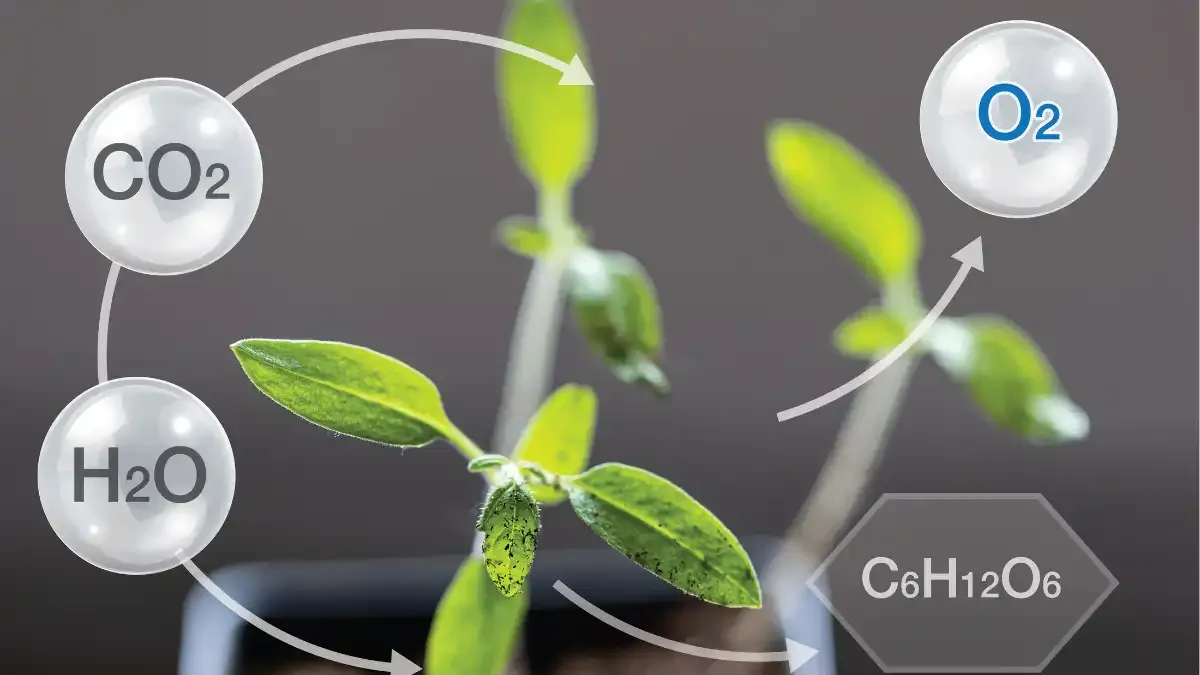The Correct Equation for Photosynthesis
The Basics of Photosynthesis
Photosynthesis is the cornerstone of the biosphere, as it enables green plants, algae, and some bacteria to convert light energy into chemical energy stored in glucose. This energy conversion takes place in specialized cellular structures called chloroplasts, where pigments like chlorophyll capture sunlight.
The process itself can be simplified into two main stages:
1. Light-Dependent Reactions
In the thylakoid membrane of chloroplasts, light energy is absorbed by chlorophyll, initiating a cascade of reactions. These reactions result in the splitting of water molecules into oxygen, protons, and electrons. The released oxygen is crucial for life on Earth, while the electrons and protons contribute to the formation of energy-rich molecules.
2. Light-Independent Reactions (Calvin Cycle)
Taking place in the stroma of chloroplasts, the Calvin Cycle utilizes the energy-rich molecules generated in the light-dependent reactions. Carbon dioxide from the atmosphere is incorporated into organic molecules, eventually forming glucose—a vital source of energy for plants and, by extension, the entire food chain.
Equation for Photosynthesis
The pursuit of the correct equation for photosynthesis has evolved over time as our understanding of cellular processes has deepened. The most widely accepted and comprehensive equation for photosynthesis is a symbolic representation of the entire process:
6CO2 + 6H2O + light energy → C6H12O6 + 6O2
Breaking down the equation:
- 6CO2 represents carbon dioxide.
- 6H2O stands for water.
- The arrow signifies the direction of the reaction.
- Light energy is a crucial component that drives the process.
- C6H12O6 denotes glucose.
- 6O2 represents oxygen.
This equation encapsulates both the light-dependent and light-independent reactions, providing a holistic view of the transformative journey of raw materials into life-sustaining energy.
The Importance of Carbon Dioxide and Water
Central to the equation are carbon dioxide and water—two seemingly ordinary compounds that play extraordinary roles in sustaining life. Carbon dioxide, absorbed from the atmosphere, provides carbon atoms for the synthesis of glucose. Water, drawn up from the roots of plants, contributes hydrogen atoms and serves as the source of electrons crucial for the reduction of carbon dioxide.
The balance between these inputs ensures the efficient functioning of photosynthesis. Any disruption in the availability of carbon dioxide or water can impact the rate at which plants produce glucose, influencing the entire ecosystem.
The Role of Light Energy
At the core of photosynthesis is the transformative power of light energy. The absorption of photons by chlorophyll molecules initiates a chain of events leading to the creation of energy-rich molecules. This energy is harnessed to drive the conversion of carbon dioxide into glucose, marking the culmination of the light-dependent reactions.
The specificity of the light energy requirement emphasizes the symbiotic relationship between plants and their environment. As sunlight bathes the Earth, plants, in turn, capture and convert this energy into a form that sustains not only their own existence but also the entire web of life.
The Yield: Glucose and Oxygen
The endpoint of the photosynthetic process is the creation of glucose and the release of oxygen. Glucose serves as a versatile energy currency for plants, supporting growth, reproduction, and defense mechanisms. The excess glucose produced is stored in various plant tissues, serving as a reservoir of energy for times of need.
Simultaneously, the release of oxygen into the atmosphere during photosynthesis is a gift to all aerobic organisms. This oxygen is fundamental to cellular respiration—the process by which living organisms extract energy from glucose, forming a cyclical relationship between photosynthesis and respiration that sustains life on Earth.
Conclusion
In the pursuit of understanding the correct equation for photosynthesis, we uncover not just a mathematical representation of chemical reactions but a profound revelation of the interconnectedness of life on our planet. The equation encapsulates the dance of molecules, the harnessing of light energy, and the synthesis of substances essential for life.
As we stand on the brink of scientific advancements, our appreciation for the elegance of photosynthesis grows. The equation serves as a testament to the ingenuity of nature, a blueprint for sustainable energy production that has shaped the very fabric of our ecosystems. In unraveling the mystery of this equation, we gain not only knowledge but also a deeper appreciation for the intricate balance that sustains life on Earth.
FAQs
1. What is photosynthesis?- Photosynthesis entails the transformation of light energy into chemical energy by plants, algae, and certain bacteria, resulting in the production of glucose and oxygen.
- Chloroplasts serve as the site for photosynthesis, with the process occurring distinctly in both the thylakoid membrane and the stroma.
- There are two stages in photosynthesis: the light-dependent reactions, which occur in the thylakoid membrane, and the light-independent reactions (Calvin Cycle), which take place in the stroma.
- The comprehensive equation is 6CO2 + 6H2O + light energy → C6H12O6 + 6O2.
- In the process of glucose synthesis, carbon dioxide furnishes the necessary carbon atoms, while water plays a pivotal role by supplying the essential hydrogen atoms and electrons crucial for reducing carbon dioxide.
- Light energy, absorbed by chlorophyll, initiates reactions leading to the creation of energy-rich molecules, driving the conversion of carbon dioxide into glucose.
- The oxygen released is vital for aerobic organisms, supporting cellular respiration and establishing a cyclical relationship that sustains life.

